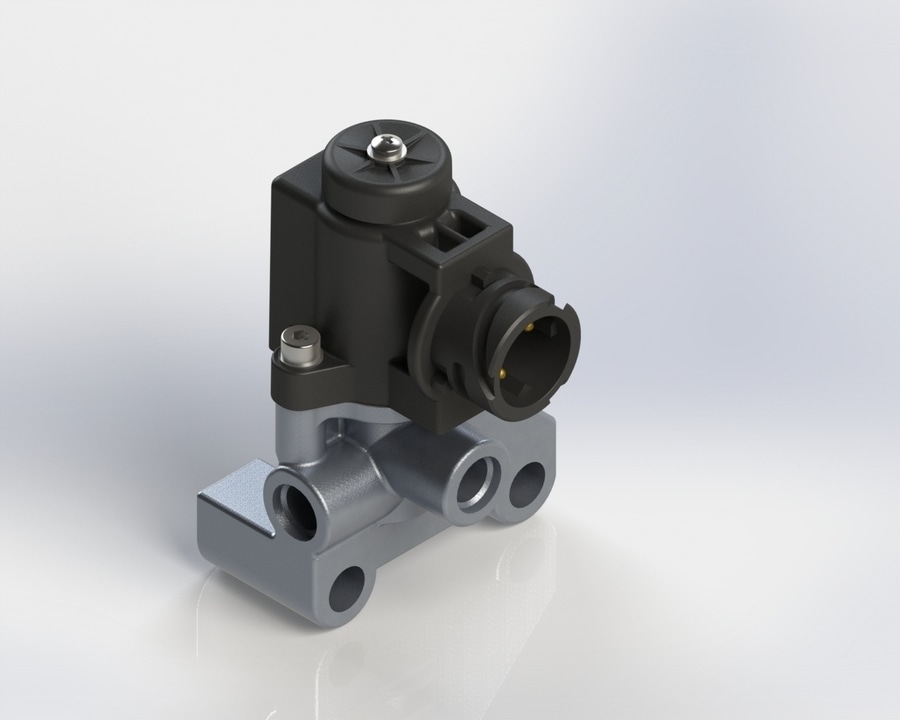
#Product Trends
Unveiling the Mechanics and Applications of Pneumatic Solenoid Valves
In the realm of industrial automation and control systems, pneumatic solenoid valves play a pivotal role.
These unassuming devices are the unsung heroes behind countless processes that require precise control and efficient operation. In this comprehensive exploration, we'll dive deep into the mechanics, types, applications, and benefits of pneumatic solenoid valves, shedding light on their importance in modern industrial setups.
Understanding Pneumatic Solenoid Valves: The Basics
At its core, a pneumatic solenoid valve is an electromechanical device used to control the flow of compressed air in pneumatic systems. The valve's functionality is guided by the principles of electromagnetism and fluid dynamics, making it an essential component in a wide range of industries, from manufacturing and automotive to pharmaceuticals and food processing.
Mechanics Behind the Magic: How Pneumatic Solenoid Valves Work
A pneumatic solenoid valve consists of two main parts: a solenoid and a valve. The solenoid is an electromagnet—a coil of wire—that produces a magnetic field when an electric current passes through it. When current flows through the coil, it generates a magnetic force that moves a plunger or armature within the solenoid.
This movement of the plunger or armature controls the opening and closing of the valve. When the solenoid is energized, the plunger is drawn towards the coil, allowing compressed air to flow through the valve and into the desired part of the pneumatic system. Conversely, when the solenoid is de-energized, a spring returns the plunger to its original position, closing the valve and stopping the flow of air.
Types of Pneumatic Solenoid Valves: Customized for Every Need
Pneumatic solenoid valves come in various configurations to cater to the diverse requirements of different applications. The most common types include:
1. Normally Closed (NC): In this type, the valve is closed in its de-energized state. It opens when the solenoid is energized, allowing air to flow through.
2. Normally Open (NO): In this configuration, the valve is open when the solenoid is de-energized. When the solenoid is energized, the valve closes, halting the air flow.
3. Double Solenoid Valve: This valve has two solenoids—one for opening and the other for closing the valve. It offers more precise control but requires more complex control circuitry.
4. Three-Way Valve: These valves have three ports: one for air inlet, one for air outlet, and one exhaust port. They are commonly used to control the direction of air flow in pneumatic cylinders.
Applications and Benefits: Where Pneumatic Solenoid Valves Shine
Pneumatic solenoid valves find applications in a myriad of industries, and their benefits are manifold:
1. Automation and Manufacturing: Pneumatic solenoid valves are the heart of many automation processes, including conveyor systems, assembly lines, and robotic operations. Their fast response times and reliable performance make them ideal for high-speed operations.
2. Energy Efficiency: These valves contribute to energy savings by enabling precise control of air flow, reducing wastage and optimizing overall system efficiency.
3. Safety Systems: In safety-critical applications, pneumatic solenoid valves ensure rapid shutdowns or emergency releases, safeguarding both equipment and personnel.
4. Medical and Pharmaceutical: Pneumatic solenoid valves are crucial in medical equipment, such as ventilators and anesthesia machines, where precise control over air flow is essential for patient care.
5. Food and Beverage Industry: The hygienic design of these valves makes them suitable for controlling processes in food and beverage production, ensuring product quality and regulatory compliance.
6. Automotive Sector: Pneumatic solenoid valves are integral to various automotive systems, including braking, suspension, and emissions control.
7. HVAC Systems: These valves are used to control air conditioning and heating systems, providing comfort and energy efficiency in commercial and residential buildings.
Conclusion: The Power Behind Precision
In the complex world of industrial automation, pneumatic solenoid valves stand as the unsung heroes, diligently controlling the flow of air to enable seamless processes. Their role in ensuring safety, precision, and efficiency cannot be understated. From manufacturing to medical equipment, these valves are the backbone of countless applications that rely on controlled air flow for optimal performance.
As technology continues to evolve, so do pneumatic solenoid valves, becoming more efficient, durable, and versatile. Their ability to handle demanding industrial environments while providing consistent and reliable performance solidifies their position as indispensable tools for modern manufacturing and automation. As industries progress, it's clear that the unassuming pneumatic solenoid valve will continue to power progress with its simple yet effective mechanism.




